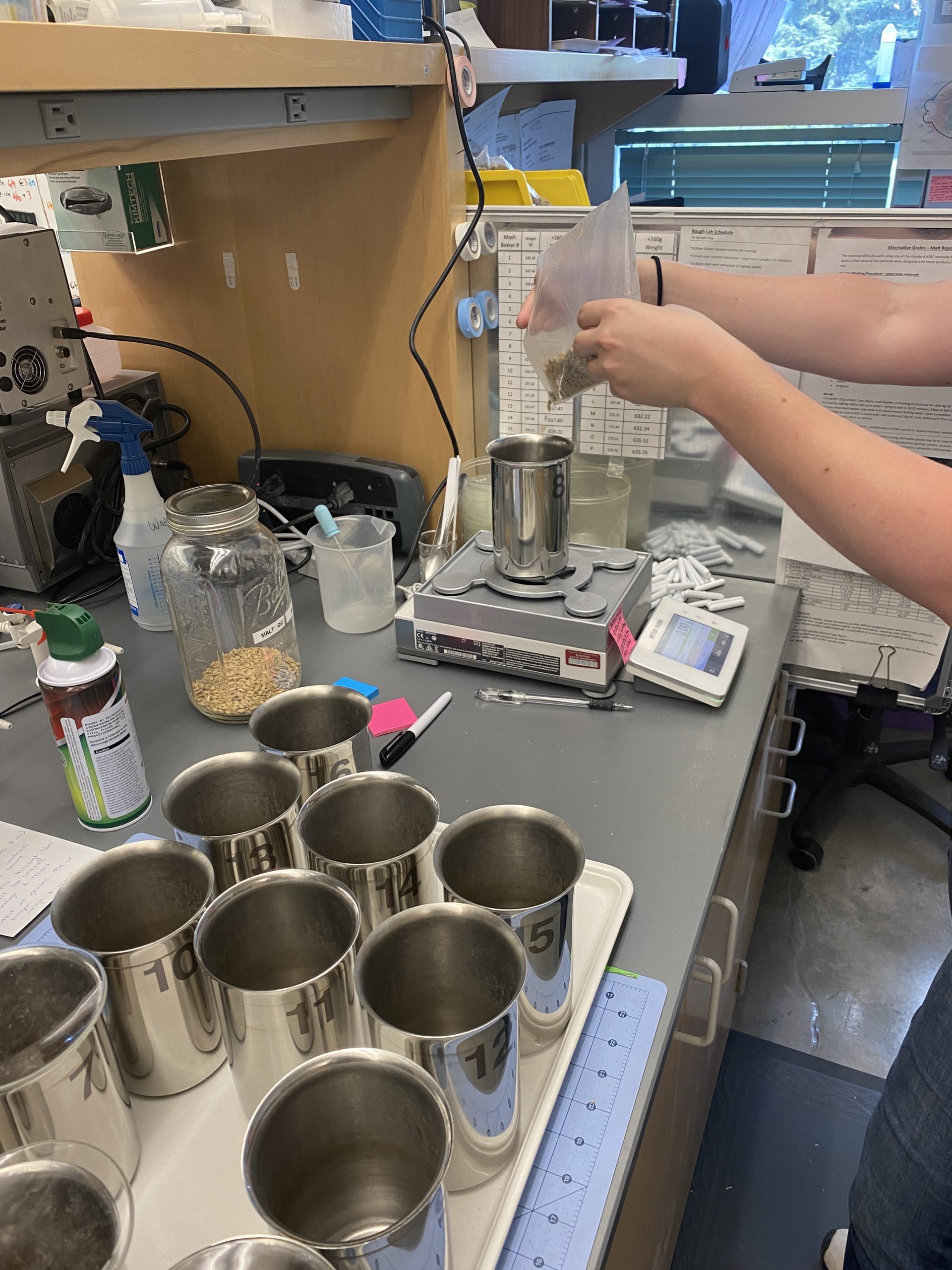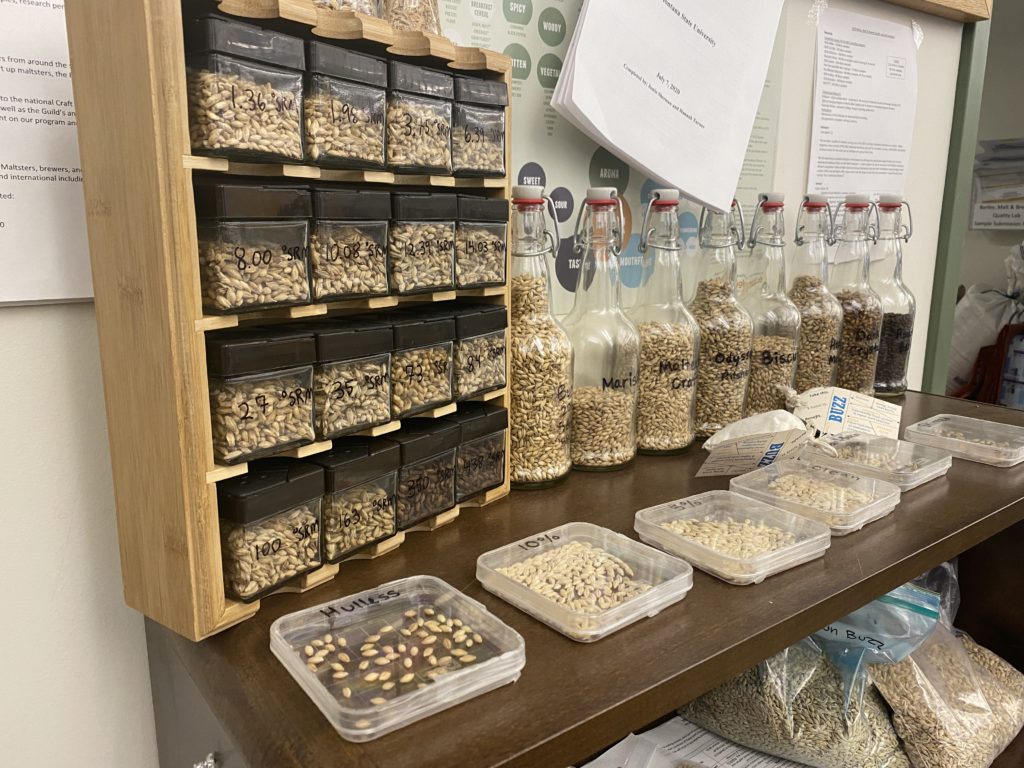Arts & Entertainment
From barley to beer
Published
3 years agoon
Posted By
Admin
MSU Malt Lab provides important malt data across the continent
By Mira Brody EBS STAFF
BOZEMAN – Since humans have been brewing beer for most of our existence— some experts say beer recipes date back 5,000 years—it’s difficult to imagine civilization without it, and one particular grain is a key component. “We say, ‘no barley, no beer,’” said Hannah Turner, Montana State University’s Barley, Malt & Brewing Quality Lab Director.
Beer’s key ingredient, barley, also plays a huge role in Montana’s agricultural history. Barley and wheat have been staples of the Treasure State for centuries and to this day, Montanans plant more barley than almost any other state in the country. Montana seems to possess a love of craft beer that is akin to their devotion to its main ingredient. The state regularly sits in the top three consumers of craft beer per capita and according to the Montana Brewers Association, there are currently 92 breweries operating in the state, a number that is consistently growing.


Between the volume of barley the state produces and its inhabitants’ love for craft beer, the MSU Barley, Malt & Brewing Quality Lab serves as an integral resource. The lab is an educational and outreach epicenter for growers, maltsters and brewers across the country. In fact, growers and brewers as far north as Canada and as far south as Texas receive data collected by the lab.
It all starts with barley breeding—the process of incorporating new traits to improve varieties. The idea is to produce high-quality and consistent barley. It starts by crossing lines that have desirable traits but are not well adapted to the Montana environment with lines that are agronomically successful in the region and that will cross will produce thousands of offspring. From there breeding involves growing, monitoring and selecting over 10 to 12 years to narrow down to the one line that embodies the qualities the lab was originally aiming for.
When MSU’s barley program director, Jamie Sherman, started in 2015, she had a vision for how the future lab would serve the region and used startup funds provided by MSU to establish the Barley, Malt & Brewing Quality Lab by 2016.
“We’re very unique in that way,” said Turner of the lab’s services. “There weren’t any other public labs that were able to do this so we kind of set an example.”
Although other labs are working toward supplying the same services MSU’s does, it remains the most robust in the region as far as data and services provided. Data about the barley, which is bred here in the campus’ greenhouses, is collected through a three-stage process: steep, germination and kiln. They get close to fermenting – though without producing alcohol since they aren’t a licensed brewery – but enough to be able to accomplish the research and answer the questions that brewers will need.
All this provides the data necessary to grow viable malts that will produce great malt, which ultimately becomes great beer.
The malting process at a glance
Malting takes advantage of the natural process of germination.
1. Steeping: Steeping takes 1-2 days, in which the barley grain is taken from 8-12 percent to 42-46 percent moisture. This tricks the barley into germination, similar to spring rains.
2. Germination: During this three to five day period the grain undergoes changes such as cell wall breakdown. This exposes the internal starches, which are then available as an energy source for the plant, or for the brewing process as a sugar source for fermentation.
3. Kiln: The kiln is a 24-hour process that slowly dries the barley, making it stable for long-term storage. Gentle kilning pauses and preserves the enzymatic actions of germination making a “base malt.” Once a brewer gets the malt they reactivate the enzymatic actions with water and heat allowing the production of delicious beer! Altering the kiln profile to incorporate higher temps, especially when the grain has higher moisture, will develop more flavor such as in specialty malts, but the tradeoff is loss of enzymes.
“To me, beer is the end of the spectrum, the consumer is very much the end of the spectrum,” said Turner. “It starts with the greenhouse and the 10 to 12 years of breeding.”
“[The lab is] balancing the levers that they have to create a barley that’s really consistent and meets very specific needs,” Turner continued. “It has to meet certain qualities to be able to be accepted as malting quality. If it doesn’t make that grade, it ends up getting sold for feed and they take a pretty significant pay cut for that.”
Currently the lab is working on a flavor project for the Brewers Association. Historically malt flavor has only been associated with variations in kilning. The lab is interested in teasing out the interplay of variety and process prior to kilning on flavor. This project involves evaluating combinations of all three (variety, malt modification and kilning) and evaluating the products as both malt and beer.
For Montana brewers, the data collected at the lab is not only useful to acquire the best malt for their beer, but also as a way to gain a better understanding of the brews they’ve created in-house, such as a breakdown of sugar, protein and alcohol content. They also collaborate on projects, such as the Pink Boots Society, a nonprofit organization that encourages and supports women all over the U.S. to become successful brewers. Turner got to work alongside local breweries, such as Beehive Basin Brewing, which she said is the best part of her job—the on-site collaboration.
“Getting to go to those collaboration days, you learn so much about what it is that the brewers are doing,” said Turner. “It’s the best feeling in the world when something that I’m doing here makes a difference or helps their process. That’s definitely a huge motivation of learning more about it, so I can make what we do more applicable to what their needs are.”
This summer, the lab will host a Post Farm Field Day on July 8, at which graduate students will showcase a new breeding project about current barley varieties grown in Montana as well as a study that looks at how barley genes impact seed size.
The next time you sip your favorite beer—no mater where you are—be assured that your taste buds are experiencing at least a decade of chemistry experiments.
Upcoming Events
september, 2024
Event Type :
All
All
Arts
Education
Music
Other
Sports
Event Details
Bike Big Sky is a FREE community mountain biking group with BSCO and Gallatin Alpine Sports. Meet at posted locations at 6 p.m. Monday evenings. Visit BSCO.org or swing by
Event Details
Bike Big Sky is a FREE community mountain biking group with BSCO and Gallatin Alpine Sports. Meet at posted locations at 6 p.m. Monday evenings. Visit BSCO.org or swing by GAS for ride information.
Time
July 22 (Monday) 6:00 pm - September 30 (Monday) 6:00 pm
Event Details
Hike Big Sky is a FREE guided hike for our community and visitors alike. A different trail will be featured each Monday at 9 a.m. Visit BSCO.org for trail description
Event Details
Hike Big Sky is a FREE guided hike for our community and visitors alike. A different trail will be featured each Monday at 9 a.m. Visit BSCO.org for trail description information. Please wear layers, bring water and snacks. Bear spray recommended.
Time
July 29 (Monday) 9:00 am - September 30 (Monday) 12:00 pm
Event Details
Bike Big Sky is a FREE community mountain biking group with BSCO and Gallatin Alpine Sports. Meet at posted locations at 6 p.m. Monday evenings. Visit BSCO.org or swing by
Event Details
Bike Big Sky is a FREE community mountain biking group with BSCO and Gallatin Alpine Sports. Meet at posted locations at 6 p.m. Monday evenings. Visit BSCO.org or swing by GAS for ride information.
Time
July 29 (Monday) 6:00 pm - October 7 (Monday) 6:00 pm
Event Details
Join Santosha, BASE and Gourmet Gals to bring you a donation based all levels community yoga lunch break class every Wednesday throughout the summer. It will be
more
Event Details
Join Santosha, BASE and Gourmet Gals to bring you a donation based all levels community yoga lunch break class every Wednesday throughout the summer. It will be taught by a variety of teachers from Santosha and BASE. This summer all proceeds will go to Big Sky Band-Aid, aside from the first one on the 26th that is happening during Pride week- all funds donated for that class will go to Big Sky OUT. A delicious lunch will also be served by Gourmet Gals following our practice each Wednesday (included in donation). You are welcome to donate with cash at the event or you can Venmo @Santoshabigsky and make a note for Community Yoga. Hope to see you in the Park!
Time
July 31 (Wednesday) 12:00 pm - September 30 (Monday) 1:00 pm
Location
Len Hill Park














